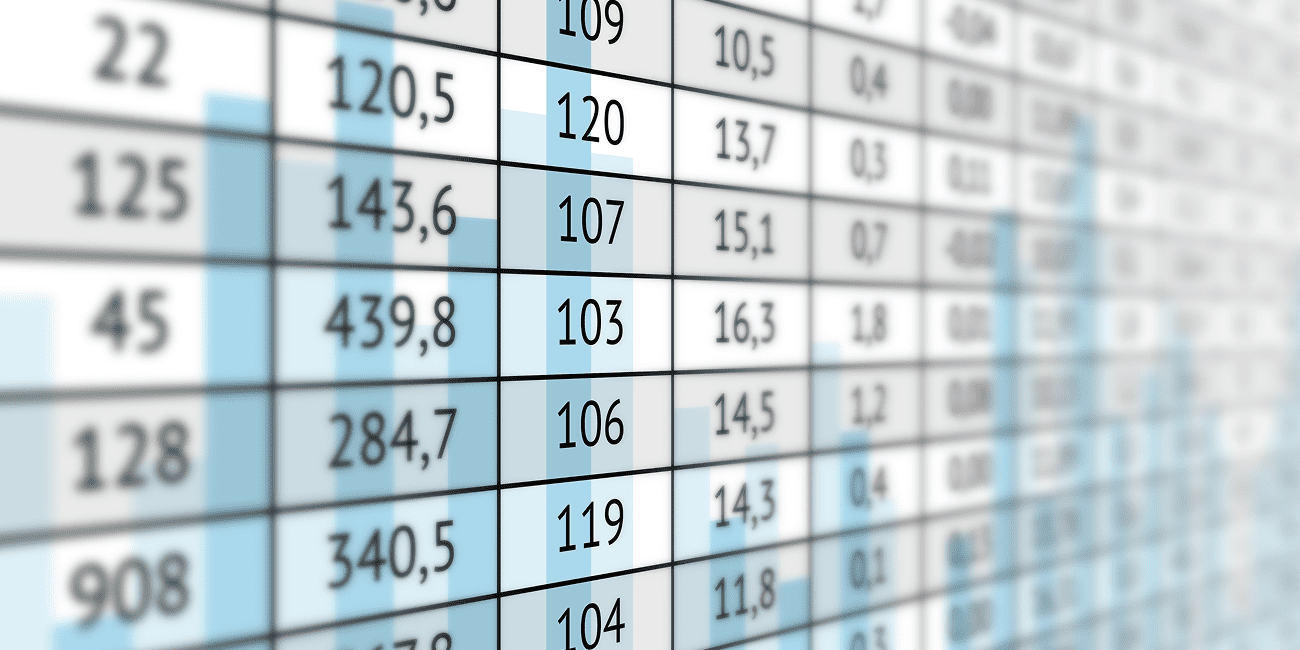 How to build strong EcoVadis submissions consistently
How to build strong EcoVadis submissions consistently
“In the end, this isn’t a story about Excel vs. software. It’s about choosing the right tool for the job—and having the courage to evolve your systems when the stakes demand it.”
As carbon reporting evolves from a “nice-to-have” to a regulatory requirement, sustainability and operations teams reevaluate their emissions tracking and management approaches. Whether preparing for compliance disclosure such as CSRD, voluntary like CDP and ecovadis or working to understand Scope 3 emissions, a crucial early decision is how you manage your carbon accounting process.
Thanks to its familiarity, flexibility, and cost-effectiveness, Excel has long been the go-to solution for many teams. However, as carbon accounting grows more complex and the stakes rise higher, the limitations of spreadsheet-based tools are becoming increasingly apparent.
A central question drives this discussion: Should you continue using trusty Excel, or is it time to invest in specialised carbon accounting software?
This blogpost will examine the technical differences between Excel and dedicated carbon accounting software platforms, helping you determine the right choice for your business.
Why carbon accounting needs more than just numbers
Carbon accounting quantifies the greenhouse gas (GHG) emissions from an organisation’s activities. It includes direct emissions (Scope 1), indirect emissions from purchased energy (Scope 2), and indirect emissions from the value chain (Scope 3).
Done right, it supports internal decision-making, risk management, and compliance with standards like the GHG Protocol, CSRD, SEC climate disclosure rules, and ISO 14064. But doing it right takes more than tracking emissions in a few cells.
The data needs to be accurate, traceable, and this is key: scalable across locations, suppliers, and years. That’s where the cracks in spreadsheet-based systems start to show.
The case for Excel: It’s familiar, flexible, and free (sort of)
Let’s be fair: Excel gets a lot of things right. Most sustainability teams know how to use it, or at least, can find someone who does. It’s widely available, extremely flexible, and easy to prototype with. It might be the fastest way to get going if you’re a small company or starting your first GHG inventory.
And yes, with enough time and skill, you can build sophisticated carbon tracking models using Excel or Google Sheets. You can customise formulas, import emissions factors, and even simulate future scenarios. In theory, there’s nothing you can’t do.
But that’s also the problem. Spreadsheets place the burden of governance, quality control, and traceability entirely on the user. One misplaced decimal or a broken formula can throw off your results, and you might not even notice. According to a study by Ray Panko at the University of Hawaii, up to 86% of spreadsheets contain errors. In carbon accounting, that’s not just a data quality issue. Although variances and minimal errors can and must be expected (recommended materiality of 5% according to ISO 14064), this becomes a reputational and compliance risk.
Add to that the version control chaos when multiple users are involved, limited ability to audit data lineage, and the lack of built-in integrations with your business systems, and suddenly, Excel isn’t so light or low-cost anymore. On top of that, vertical knowledge sharing is not a forte in sustainability, most data owners are not prepared to share the information in the correct format, unit, time and moreover context.
What does carbon accounting software get right?
Dedicated carbon management platforms are designed with these challenges in mind. They don’t just help you record emissions data, they help you govern, analyse, and report on it.
Most platforms come equipped with:
- Pre-loaded emissions factor databases, like BEIS or EPA.
- Automated data ingestion from your utility bills, or transportation systems.
- Built-in audit trails and access controls.
- Templates aligned with GHG Protocol, CDP, or other regulatory frameworks.
- Dashboards and scenario modelling tools that extract insights from the data that are vital for decision-making.
From a technical perspective, these tools are purpose-built to scale carbon data collection across large, complex organisations. They reduce manual entry and the risk of human error, while making it much easier to slice and dice your emissions data for compliance, investor reporting, or internal strategy.
In addition, it can be used as a template, calculator, dashboard, modelling tool, storytelling source and more. Then again, the results are as accurate as the data that is input in the tool.
Meeting the moment: Compliance is raising the bar
With new regulations such as the EU’s Corporate Sustainability Reporting Directive (CSRD) and California’s SB 253, the expectations for transparency and consistency in emissions data are rapidly evolving.
Software solutions are more aligned with this future. They provide clear audit trails, allow permissioned access, and often come with tools for aligning with standards like TCFD, ISSB, and ISO 14064.
While Excel tools can meet those standards, the time and resources required to build and maintain a compliant system in Excel can quickly surpass the cost of using a platform designed for that exact job.
What about cost?
This is where the conversation often gets tricky. Yes, Excel is “free” if you already have Office, and most teams have experience using it. But, the hidden costs, time spent on quality control, audits, model maintenance, and fixing human error add up quickly.
Dedicated software, while involving upfront licensing and onboarding costs, tends to deliver a lower total cost of ownership over time. It automates repetitive tasks, reduces the need for specialised spreadsheet expertise, and helps teams move faster with more confidence.
Of course, not every company is ready to make that leap. Smaller teams may still find Excel works for their needs, especially in the early stages. The trick is to know when that inflexion point happens, essentially when Excel becomes a bottleneck rather than a bridge.
Final thoughts: It’s not either-or, it’s about fit
Let’s be honest. Excel has its place. If you have a small emissions footprint or are just starting to wrap your head around Scope 3 data, spreadsheets offer unmatched flexibility, as long as you’re willing to invest the time to learn how to wield them safely.
But once your carbon reporting starts scaling, with more facilities, data sources, and regulations, it’s hard to justify staying with a tool that was never designed for this level of complexity. That’s where software earns its keep.
Summary & takeaways
- Excel is great for early-stage carbon accounting due to flexibility and cost, but struggles with scale, data governance, and auditability.
- Dedicated software offers automation, integrated data sources, compliance-ready reporting, and better long-term scalability.
- Regulations like CSRD and California’s SB 253 are raising the bar for emissions data quality and transparency, favouring systems with audit trails and validation.
- Cost-wise, spreadsheets appear cheaper up front, but often incur hidden costs through manual labour, error risk, and rework.
- Final recommendation: Use Excel when you’re small, nimble, and still designing your carbon data architecture, but plan for a transition to software as soon as scale, compliance, or stakeholder pressure begins to increase.
Trade-offs need to be considered, are you aiming for accuracy? Ease of management? Then explore a software or cloud based tool. Are you aiming for low investment (moneywise); total independence and looking only for tables and more or less accurate results? Then you can definitely explore Excel (and maybe a mix with its bigger brother Power BI), but not for long.
In the end, this isn’t a story about Excel vs. software. It’s about choosing the right tool for the job. This means having the courage to evolve your systems when the stakes demand it.
Frequently asked questions
Should companies manage climate data in spreadsheets or specialised software?
Spreadsheets may work for small data sets, but as organisations scale, specialised software offers automation, better accuracy, audit trails and supplier integration—making it the smarter choice for robust climate-data management.
What are the key features to look for in climate-data management software?
Essential features include real-time data capture, Scope 1-3 tracking, scenario modelling, supplier portal integration, and dashboard visualisation for easy stakeholder reporting.
When is it time to transition from spreadsheets to climate software?
If your climate reporting involves multiple data sources, manual consolidation, or you’re under regulatory pressure (e.g., CSRD, SEC), it’s time—software ensures scalability, auditability, and accuracy.
What common pitfalls should companies avoid when managing climate data?
Avoid relying on fragmented spreadsheets, lacking supplier data, failing to secure user access controls, and not maintaining change logs or audit trails—these undermine data integrity and reliability.
How can using the right data platform improve sustainability reporting?
The right platform consolidates data, allows drill-down analysis, generates disclosures aligned with frameworks, provides stakeholder dashboards, reduces error risk, and accelerates reporting process.
How can we help?
Nexio Projects is your full-service sustainability partner, helping you to break down complex challenges and target ambitious climate action. With over 400 clients in 20+ countries, we use advanced carbon management systems designed to go beyond basic data entry. Our tools incorporate regulatory requirements and are aligned with global frameworks and templates such as CDP, GHG Protocol, and reporting standards like TCFD, ISSB, and ISO 14064. This ensures our clients can manage their emissions data with confidence, meet disclosure expectations, and stay ahead in a rapidly evolving regulatory landscape. See our climate solutions, and explore ways to make your climate data smarter.
Interested in more climate news and updates? Subscribe to our monthly newsletter.
Have questions? Contact us and get tailored advice for your organisation.











